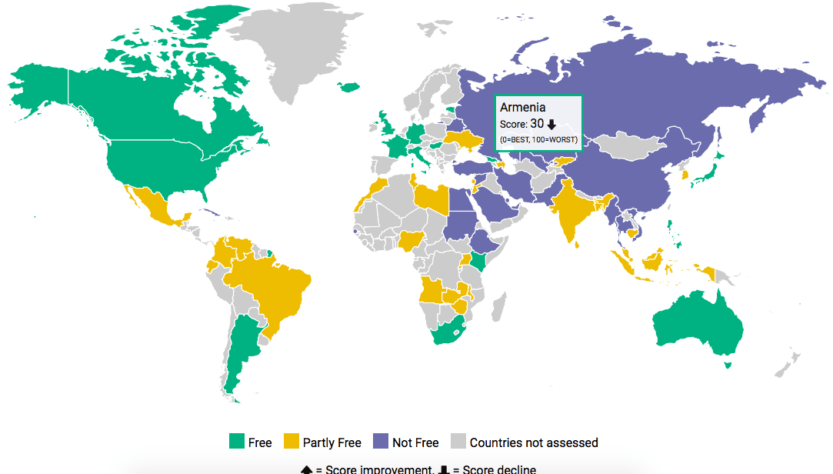Freedom House published its “Freedom on the Net 2016” report on Monday. Armenia retained its position among the countries with free internet (the report covers June 2015 – May 2016), but its overall score declined by two points and the country came really close to the “partly free” category, which was mostly due to the police violence against journalists (including myself) during the #ElectricYerevan protests as well as the increased self-self-censorhip during the 4 day war with Azerbaijan in April 2016.
The key developments highlighted by the report are:
- In July 2016, amid clashes between an armed militant group and authorities, Facebook was briefly unavailable for users in Armenia across several ISPs (see Blocking and Filtering).
- In April 2016, hostilities broke out between Armenian and Azerbaijani forces over the disputed Nagorno-Karabakh territory. Throughout the conflict, online commentators were encouraged to practice self-censorship (see Media, Diversity, and Content Manipulation).
- In June 2015, police targeted journalists livestreaming the Electric Yerevan protests in the capital, beating them and confiscating their equipment (seeIntimidation and Violence).
- In July 2015, a trial commenced against the creators of satirical YouTube Channel “SOS TV”, with police seeking an apology and payment of a fine for a video which they claim insults the Armenian police force (see Prosecutions and Detentions for Online Activity).
The full report is here.
PS: Attacks against journalists continued in Armenia after the coverage period of this report. In July 29, 2016 plain-clothes attacked 3 of my colleagues, journalists from the Armenian service of RFE/RL, while they were covering clashesbetween riot police and protesters marching in support of armed gunmen who have occupied a police compound in Yerevan for the past two weeks.
